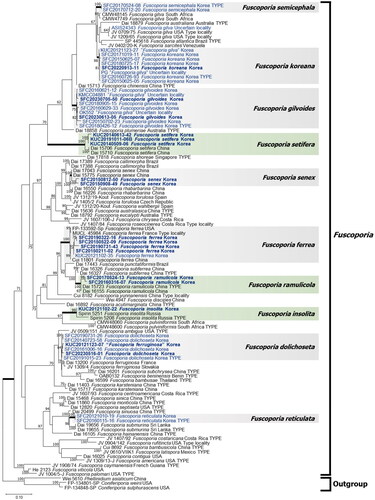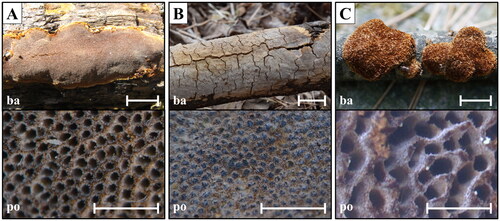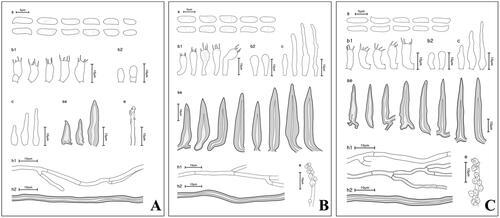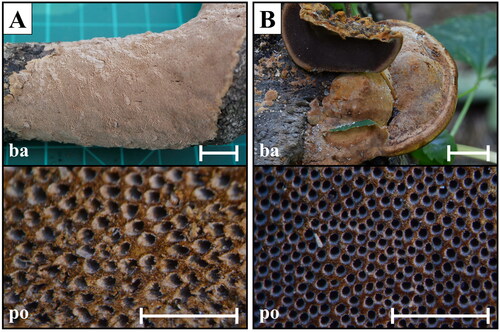Figures & data
Table 1. List of Fuscoporia specimens and GenBank accessions used in the study.
Figure 1. Maximum-likelihood tree of Fuscoporia species based on four genetic markers (ITS + nrLSU + RPB2 + TEF1). Bootstrap values >60 are indicated at the nodes. A total of 10 species were identified, including three unrecorded species indicated by green color. Seven species indicated by gray color have been previously reported in Korea. Strains whose sequences were newly obtained in this study are indicated in bold, and sequences submitted from Korea are highlighted in blue.

Figure 2. Macroscopic morphology of unrecorded Fuscoporia species. (A) F. insolita (KUC20121102-22); (B) F. ramulicola (SFC20160316-07); (C) F. setifera (KUC20140509-06) (ba: basidiome; po: pore surface). Scale bar = 1 mm.

Figure 3. Microscopic morphology of unrecorded Fuscoporia species. (A) F. insolita; (B) F. ramulicola; (C) F. setifera (s: basidiospores; b1: basidia; b2: basidioles; c: cystidioles; se: setae; h1: generative hyphae; h2: skeletal hyphae; e: encrusted generative hyphae).

Figure 4. Macroscopic morphology of Fuscoporia species. (A) F. ferrea (SFC20150211-02); (B) F. senex (SFC20150812-50). Scale bar = 1 mm.

Figure 5. Microscopic morphology of Fuscoporia species. (A) F. ferrea; (B) F. senex (s: basidiospores; b1: basidia; b2: basidioles; c: cystidioles; se: setae; h1: generative hyphae; h2: skeletal hyphae; e: encrusted generative hyphae).

Figure 6. Taxonomic key for 10 Korean Fuscoporia species. The branch length does not indicate the genetic distance between species. Four recorded species not supported with sequence evidence (F. contigua, F. ferruginosa, F. gilva, and F. viticola) were excluded.

